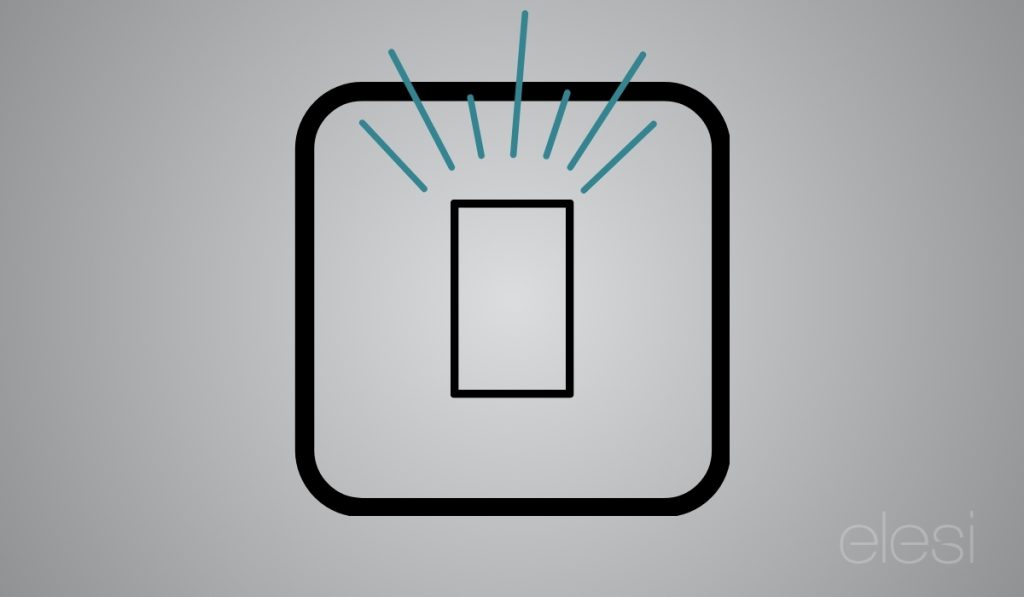What is a Kinetic Switch?
What is a Kinetic Switch?

With smart technology and energy saving at the forefront of home improvements, a kinetic switch is a game changing solution.
Unlike traditional switches that rely on an external power source, kinetic switches use the principle of kinetic energy to function. These switches harvest the energy generated from the physical act of pressing the switch, eliminating the need for wiring or batteries. Let’s dive a little deeper into how this actually functions.
How Does a Kinetic Switch Work?
The core of a kinetic switch lies in its energy-harvesting technology. Here's an easy-to-understand breakdown of how it works:
- Energy Generation: When you press the switch, the mechanical motion creates kinetic energy.
- Energy Conversion: This kinetic energy is then converted into electrical energy using a tiny internal generator.
- Signal Transmission: The generated electrical energy powers a signal transmitter, which sends a wireless signal to a receiver (e.g., a light fixture, smart hub, or other device).
- Action Execution: The receiver interprets the signal and performs the intended action, such as turning on a light or operating a device.
Advantages of Kinetic Switches
- Wireless and Battery-Free: Kinetic switches do not need electrical wiring or batteries, making them incredibly versatile and environmentally friendly.
- Easy Installation: Because they don’t require wiring, installation is quick and straightforward. This makes them ideal for retrofitting older buildings or adding controls to places where wiring would be impractical.
- Eco-Friendly: By eliminating the need for disposable batteries, kinetic switches help reduce electronic waste.
- Low Maintenance: With no batteries to replace and no wires to manage, these switches are practically maintenance-free.
- Flexibility: They can be placed anywhere, such as on walls, furniture, or even portable surfaces, offering unmatched convenience.
Applications of Kinetic Switches
Kinetic switches are gaining popularity in a variety of settings due to their flexibility and eco-friendly nature. Here are just a few ways you can use kinetic switches:
Smart Homes: Controlling lights, fans, or other smart devices.
Commercial Spaces: Energy-efficient control systems for offices, conference rooms, or retail spaces.
Industrial Use: Streamlining operations in manufacturing plants and warehouses.
Outdoor Settings: Weather-resistant applications like garden lighting or pool controls.
Retrofitting Older Properties: Operating lighting in a building where complex wiring is impractical or impossible.
Rental Properties: Adding convenient switches in a rented property without rewiring.
Limitations of Kinetic Switches
While kinetic switches are innovative and highly practical, they come with certain limitations:
- Range: The wireless signal may have a limited range, depending on the environment and the receiver's sensitivity.
- Compatibility: These switches may require compatible receivers or smart systems to function seamlessly.
- Cost: The initial cost of kinetic switches can be higher than traditional switches due to the advanced technology involved.
The Future of Kinetic Switches
As the demand for sustainable and energy-efficient solutions grows, kinetic switches are poised to become a regular feature as part of smart home ecosystems and industrial applications. With advancements in wireless communication protocols and energy-harvesting technology, we can expect even more innovative and cost-effective designs in the future.
In conclusion, a kinetic switch represents a leap forward in the way we think about energy use and device control. By harnessing the power of motion, these switches offer a sustainable, maintenance-free alternative to traditional electrical systems, making them a smart choice for homes and businesses alike.
[related_products is_auto_added="1"]

